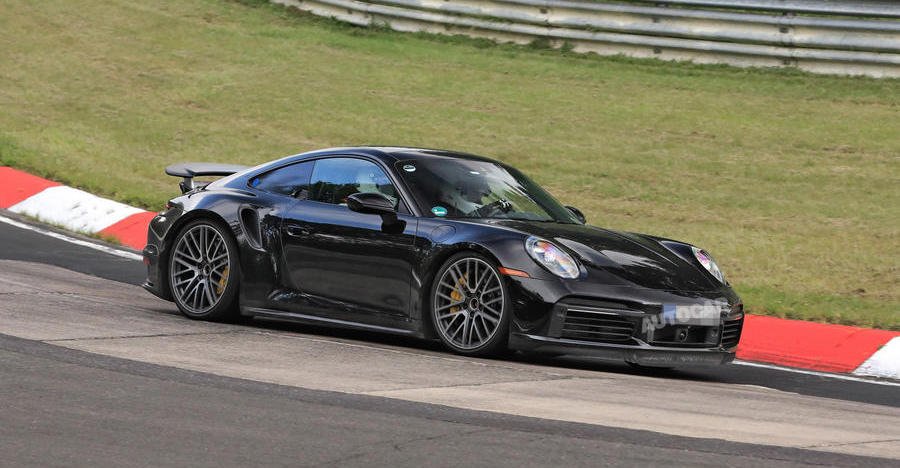Porsche 911 Turbo hybrid prototype hits the Nurburgring

Porsche looks to be testing an electrified version of its 911 flagship at the Nürburgring, suggesting the launch of the long-mooted hybrid variant is on the horizon.
Based on the top-rung 911 Turbo, this prototype wore the tell-tale yellow sticker that's mandatory for hybridised test vehicles in Germany and had blacked-out rear windows - likely to hide additional batteries and their associated wiring.
Porsche has previously confirmed that the current Mk8 (992-series) 911 was developed to accommodate both mild-hybrid and plug-in hybrid powertrains, primarily by allowing more space in the rear end to integrate a disc-shaped electric motor into the gearbox.
August Achleitner, then head of sports car development, told Autocar in 2018: "We’ve taken the experience we gained with hybrid versions of the Cayenne and Panamera, as well as the 918 Spyder, and applied it to the new 911. In the future, this will allow us to offer [the 911] with pure-electric capability.”
As part of the mechanical adaptation for the hybrid, the 911 uses a gearset based on that used by the Panamera and Cayenne hybrids. It's 100mm shorter than that used by the 991-generation car, opening up space at the rear of the gearbox for an EV motor.
The eight-speed automatic gearbox has also been uprated to cope with higher torque loads than in the previous car.
At this stage, little is known of its precise technical make-up or performance potential, but Achleitner hinted that rough pace parity with the Panamera S E-Hybrid could be expected, which suggests a 911 hybrid could pack up to 671bhp and 626lb ft.
The standard combustion variant of the 911 Turbo produces 572bhp and 553lb ft and can crack the 0-62mph sprint in 2.8sec. Hybrid cars will weigh more but are expected to use front-mounted batteries for improved weight distribution.
No charging port is visible on this prototype, suggesting the batteries are being charged via brake regeneration, although production-spec cars could bring a different set-up.
Related News
